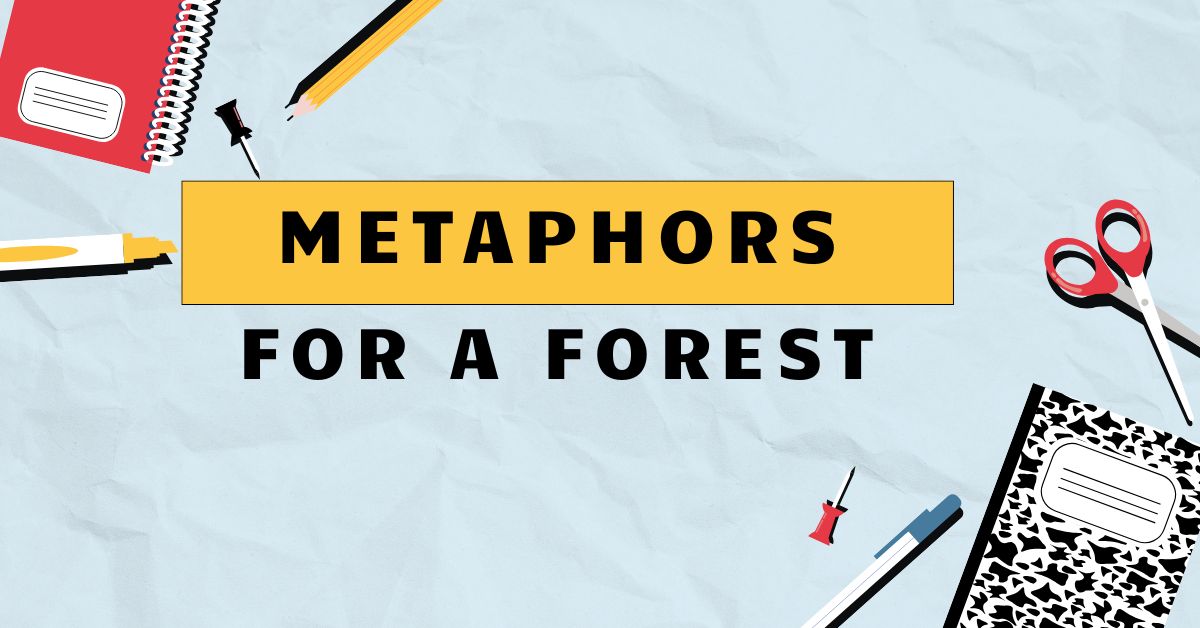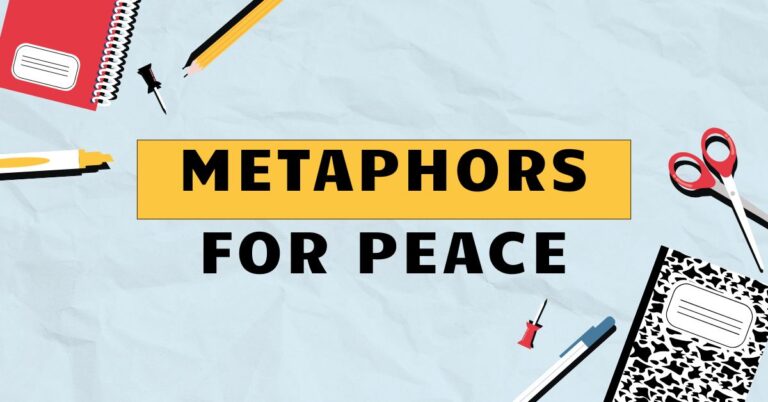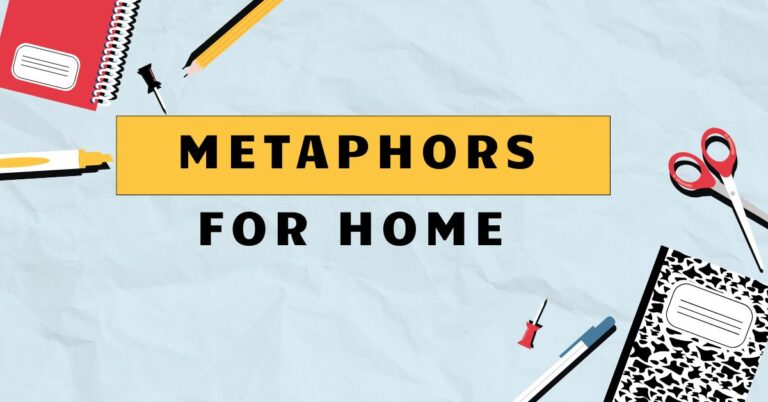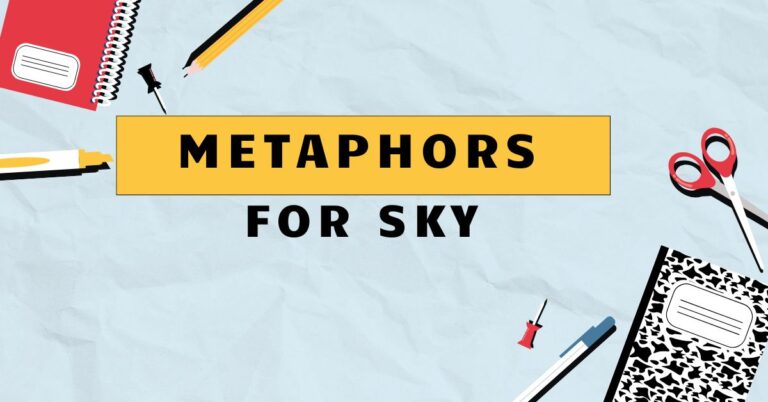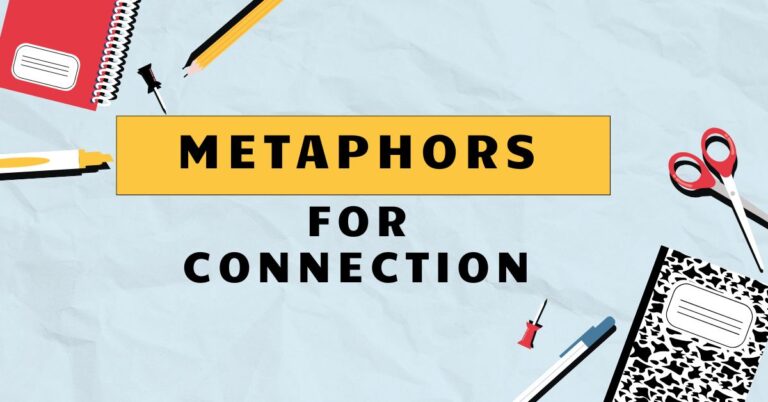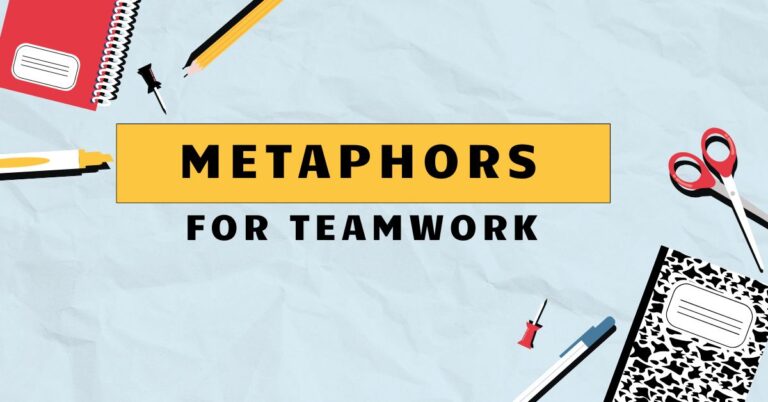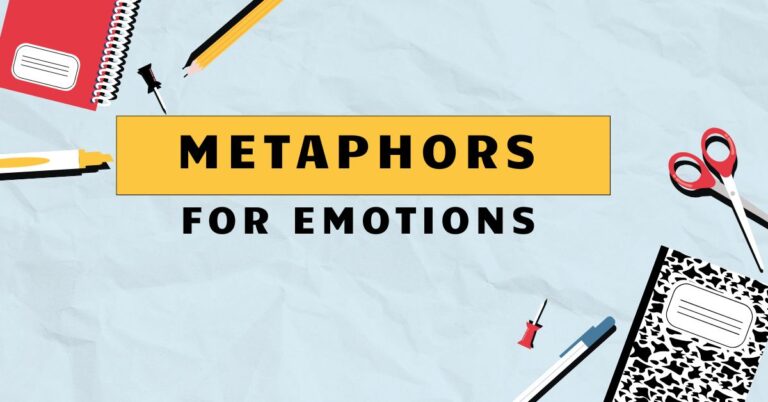33 Forest Metaphors: Understanding Figurative Language
Metaphors are a powerful tool in the English language, allowing us to understand abstract concepts by comparing them to something more concrete and familiar. Understanding metaphors, especially those related to nature such as forests, enriches comprehension and expression.
This article explores the various metaphors for a forest, their meanings, and how they are used in different contexts. Whether you are an English language learner, a writer seeking to enhance your prose, or simply someone interested in the beauty of language, this guide will provide a comprehensive understanding of forest metaphors.
By exploring these metaphors, we can gain insights into how the forest is perceived and what qualities it represents. This knowledge enhances our ability to interpret literature, poetry, and everyday language, making us more effective communicators and critical thinkers.
This article provides a structured approach to understanding and using forest metaphors, complete with examples, exercises, and explanations to deepen your understanding. Grasping these metaphors will enhance your ability to appreciate and utilize figurative language effectively.
Table of Contents
- Introduction
- Definition of Metaphor
- Structural Breakdown of Forest Metaphors
- Types and Categories of Forest Metaphors
- Examples of Forest Metaphors
- Usage Rules for Forest Metaphors
- Common Mistakes with Forest Metaphors
- Practice Exercises
- Advanced Topics in Forest Metaphors
- Frequently Asked Questions
- Conclusion
Definition of Metaphor
A metaphor is a figure of speech that directly compares two unrelated things, asserting that one thing *is* another, to suggest a likeness or analogy between them. Unlike similes, which use “like” or “as” to make a comparison, metaphors make a direct assertion, creating a more vivid and impactful image.
Metaphors are fundamental to human thought and language, allowing us to understand abstract concepts by relating them to concrete experiences.
Metaphors are not merely decorative; they play a crucial role in shaping our understanding of the world. By framing one thing in terms of another, metaphors can highlight certain aspects while obscuring others, influencing our perception and interpretation.
The effectiveness of a metaphor lies in its ability to create a resonant connection between the two disparate elements, leading to new insights and deeper understanding.
Classification of Metaphors
Metaphors can be classified in several ways, based on their structure and function. One common classification distinguishes between:
- Standard Metaphors: These are explicit comparisons where both terms are clearly stated.
- Implied Metaphors: These metaphors suggest a comparison without explicitly stating one of the terms.
- Dead Metaphors: These are metaphors that have become so common that they are no longer recognized as figurative language.
- Mixed Metaphors: These are combinations of two or more incompatible metaphors, often creating a nonsensical or humorous effect.
Understanding these classifications helps in identifying and analyzing different types of metaphors in various contexts. Each type serves a unique purpose and contributes to the overall richness of language.
Function of Metaphors
Metaphors serve several important functions in communication:
- Explanation: They can simplify complex ideas by relating them to more familiar concepts.
- Emphasis: They can highlight certain aspects of a subject, making them more memorable.
- Persuasion: They can influence attitudes and beliefs by framing a subject in a particular light.
- Aesthetic Appeal: They can add beauty and creativity to language, making it more engaging.
The power of a metaphor lies in its ability to perform multiple functions simultaneously, enhancing both the clarity and impact of communication. They are essential tools for writers, speakers, and anyone seeking to express themselves effectively.
Contexts for Using Metaphors
Metaphors are used in a wide range of contexts, including:
- Literature: Novels, poems, and plays often use metaphors to create vivid imagery and convey deeper meanings.
- Everyday Speech: Metaphors are common in everyday conversations, often without us even realizing it.
- Business: Metaphors are used to explain complex business strategies or to motivate employees.
- Science: Metaphors can help to explain complex scientific concepts to a wider audience.
The context in which a metaphor is used can significantly affect its interpretation and impact. Understanding the context is crucial for both creating and interpreting metaphors effectively.
Structural Breakdown of Forest Metaphors
To understand forest metaphors, it’s important to break down their structural elements. This involves identifying the tenor and vehicle, and recognizing how implied metaphors function.
Tenor and Vehicle
In a metaphor, the tenor is the subject being described, and the vehicle is the object or concept used to describe the tenor. In the context of forest metaphors, the forest itself can be either the tenor or the vehicle, depending on what is being compared to it.
For example, in the metaphor “The city is a concrete forest,” the city is the tenor and the forest is the vehicle. The metaphor suggests that the city shares certain characteristics with a forest, such as density, complexity, and a sense of being lost within its boundaries.
Consider another example: “Her mind was a dark forest, full of hidden paths.” Here, “her mind” is the tenor, and “a dark forest” is the vehicle. This implies that her mind is complex, mysterious, and potentially dangerous to navigate.
The relationship between the tenor and vehicle is crucial to the effectiveness of the metaphor. The vehicle should be something that is easily understood and that has relevant qualities that can be transferred to the tenor.
Implied Metaphors
An implied metaphor is a type of metaphor that does not explicitly state one of the terms (either the tenor or the vehicle). Instead, it suggests a comparison through subtle language and imagery.
For example, instead of saying “He devoured the book,” which is a direct metaphor, an implied metaphor might be “He chewed through the book in a single night.” Here, the act of “chewing” implies a comparison to eating, but the explicit mention of food is absent. The reader must infer the comparison.
In the context of forest metaphors, an implied metaphor might be “The company’s growth has been branching out in unexpected directions.” Here, the phrase “branching out” evokes the image of a tree, suggesting growth and expansion, but without explicitly mentioning a forest or tree.
Implied metaphors can be more subtle and nuanced than direct metaphors, requiring the reader to engage more actively in interpreting the meaning. They can also be more powerful, as they allow the reader to discover the connection between the two terms for themselves.
Types and Categories of Forest Metaphors
Forest metaphors can be categorized based on the aspects of the forest they emphasize. These categories help to understand the different ways a forest can be used metaphorically.
Growth and Development Metaphors
These metaphors use the forest to represent growth, development, and potential. They often emphasize the idea of something starting small and gradually expanding.
Examples include: “The project has blossomed into a full-fledged forest of activity,” or “His ideas sprouted like seedlings in the fertile ground of his mind.” These metaphors highlight the organic, natural process of growth and development.
Complexity and Interconnectedness Metaphors
These metaphors focus on the intricate web of relationships and elements within a forest, representing complex systems or situations.
Examples include: “The political landscape is a dense forest of conflicting interests,” or “The human body is a complex forest of interconnected systems.” These metaphors convey the idea of something being multifaceted and challenging to navigate.
Danger and Mystery Metaphors
These metaphors use the forest to evoke feelings of danger, mystery, and the unknown. They often highlight the potential for getting lost or encountering hidden threats.
Examples include: “Her past was a dark forest she dared not enter,” or “The stock market is a treacherous forest full of hidden pitfalls.” These metaphors create a sense of unease and caution.
Resource and Sustenance Metaphors
These metaphors emphasize the forest as a source of resources, sustenance, and life. They often highlight the idea of the forest providing for those who depend on it.
Examples include: “The company is a forest of opportunity for its employees,” or “Education is a forest that provides nourishment for the mind.” These metaphors convey the idea of abundance and support.
Community and Ecosystem Metaphors
These metaphors represent the forest as a community or ecosystem, where different elements work together to create a balanced and thriving environment.
Examples include: “Our team is a forest of diverse talents working in harmony,” or “The city is an urban forest, with different communities coexisting.” These metaphors highlight the importance of collaboration and interdependence.
Examples of Forest Metaphors
The following tables provide extensive examples of forest metaphors, organized by category. Each example illustrates how the forest is used to represent different concepts and ideas.
Examples of Growth and Development Metaphors
The following table illustrates how forests are used to describe growth and development. Consider each carefully to understand the nuances of these metaphors.
| Metaphor | Explanation |
|---|---|
| “Her career blossomed into a dense forest of achievements.” | Her career grew significantly, with many accomplishments. |
| “The small business grew into a towering forest of success.” | The business experienced substantial growth and became very successful. |
| “His ideas sprouted like seedlings in the fertile ground of innovation.” | His ideas originated and developed in an environment conducive to innovation. |
| “The project has blossomed into a full-fledged forest of activity.” | The project has expanded into a complex and busy undertaking. |
| “The non-profit organization grew from a sapling into a strong forest supporting the community.” | The organization began small but developed into a significant support system for the community. |
| “The artist’s imagination was a lush forest, teeming with creative potential.” | The artist had a rich and abundant source of creative ideas. |
| “The software project began as a single line of code but grew into a complex forest of functionality.” | The software project evolved from a simple beginning to a highly functional system. |
| “The academic paper was a carefully cultivated forest of research, with each study supporting the central argument.” | The paper was a well-developed and thorough analysis, supported by extensive research |
| “The community garden was a vibrant forest of fresh produce, providing nourishment for all.” | The community garden thrived, offering a plentiful supply of fresh food. |
| “The musician’s talent grew into a vast forest of musical expression.” | The musician’s talent expanded significantly, allowing for diverse musical performances. |
| “The novel began as a short story and grew into a sprawling forest of interwoven narratives.” | What started as a brief tale became a large and intricate novel with multiple stories. |
| “The entrepreneur’s venture transformed from a single idea into a flourishing forest of business opportunities.” | The entrepreneur’s initial concept expanded into a diverse array of business prospects. |
| “The dancer’s skills developed into a graceful forest of fluid movement and artistic expression.” | The dancer’s abilities evolved into a beautiful and expressive form of art. |
| “The student’s understanding matured into a deep forest of knowledge, filled with insights and wisdom.” | The student’s comprehension broadened into a profound understanding of the subject matter. |
| “The athlete’s training regimen built a robust forest of physical strength and endurance.” | The athlete’s training program developed a strong foundation of physical capabilities. |
| “The ecosystem of the startup grew into a vibrant forest of interconnected partnerships and collaborations.” | The startup’s network expanded into a dynamic web of relationships and teamwork. |
| “The family tree branched out into a sprawling forest of diverse personalities and experiences.” | The family’s lineage expanded to include a wide variety of individuals and stories. |
| “The team’s collective effort created a complex forest of interconnected projects and initiatives.” | The team’s collaboration resulted in a multifaceted collection of endeavors. |
| “The city’s cultural scene evolved into a rich forest of artistic expression and creative innovation.” | The city’s cultural landscape developed into a vibrant hub of creativity and art. |
| “The inventor’s workshop became a sprawling forest of prototypes and experimental designs.” | The inventor’s workspace transformed into a dynamic collection of inventions and ideas. |
Examples of Complexity and Interconnectedness Metaphors
This table explores the use of forests to represent complex systems and interconnected relationships. Each metaphor highlights the intricate nature of the subject.
| Metaphor | Explanation |
|---|---|
| “The political landscape is a dense forest of conflicting interests.” | Politics involves many competing viewpoints and agendas. |
| “The human body is a complex forest of interconnected systems.” | The body consists of many parts that all work together. |
| “The legal system is a tangled forest of regulations and precedents.” | The legal system is complicated and difficult to navigate. |
| “The internet is a vast forest of information, both helpful and misleading.” | The internet contains a massive amount of information, some of which is unreliable. |
| “The company’s organizational structure is a dense forest, making it hard to see who reports to whom.” | The company’s hierarchy is complex and confusing. |
| “The city’s traffic patterns are a chaotic forest during rush hour.” | The city’s traffic is disorganized and overwhelming during peak times. |
| “The research paper was a dense forest of data and analysis.” | The research paper was filled with complex and detailed information. |
| “The project’s timeline was an intricate forest of dependencies and deadlines.” | The project’s schedule was complicated and tightly linked. |
| “The software code was a tangled forest of functions and modules.” | The software code was complex and difficult to understand. |
| “The financial market is a dense forest of investment options and risks.” | The financial market is filled with numerous choices and potential dangers. |
| “The family history was a sprawling forest of interconnected relationships and stories.” | The family’s lineage was complex and rich with personal narratives. |
| “The ecosystem of the rainforest is a dense forest of interdependent species.” | The rainforest is a highly interconnected environment where species rely on each other. |
| “The social media landscape is a vast forest of opinions and perspectives.” | Social media contains a wide range of viewpoints and beliefs. |
| “The human brain is a complex forest of neural networks and connections.” | The brain is a sophisticated system of interconnected nerve cells. |
| “The city’s infrastructure is a tangled forest of pipes, wires, and cables.” | The city’s essential services are supported by a complex network of utilities. |
| “The academic curriculum is a dense forest of subjects and disciplines.” | The academic curriculum is comprehensive and covers many areas of study. |
| “The legal document was a convoluted forest of clauses and stipulations.” | The legal document was confusing and filled with intricate details. |
| “The company’s supply chain is a complex forest of suppliers and distributors.” | The company’s supply chain involves many interconnected businesses. |
| “The political debate was a tangled forest of arguments and counterarguments.” | The political debate was complicated and filled with conflicting opinions. |
| “The project’s management structure was a dense forest, making it difficult to navigate.” | The way that the project was managed was complex and hard to understand. |
Examples of Danger and Mystery Metaphors
The following table shows how forests are used to symbolize danger and mystery. They emphasize the unknown and potential threats lurking within.
| Metaphor | Explanation |
|---|---|
| “Her past was a dark forest she dared not enter.” | Her past was filled with painful memories she avoided. |
| “The stock market is a treacherous forest full of hidden pitfalls.” | Investing in the stock market is risky and unpredictable. |
| “The abandoned house was a haunted forest of memories.” | The house was filled with unsettling and disturbing memories. |
| “The investigation led them into a dark forest of secrets and lies.” | The investigation uncovered a web of deceit and hidden information. |
| “The politician’s career was a perilous forest of scandals and controversies.” | The politician’s career was marked by numerous damaging events. |
| “The unexplored region was a mysterious forest, full of unknown dangers.” | The region was uncharted and potentially hazardous. |
| “The online world is a dark forest of cyber threats and malicious actors.” | The internet is filled with potential dangers and harmful individuals. |
| “The abandoned city was a silent forest of crumbling buildings and forgotten stories.” | The city was desolate and filled with remnants of the past. |
| “The old diary was a forbidden forest of painful memories and untold secrets.” | The diary contained difficult and hidden information. |
| “The company’s financial situation was a precarious forest of debt and uncertainty.” | The company’s finances were unstable and risky. |
| “The athlete’s comeback was a challenging forest of injuries and setbacks.” | The athlete faced many obstacles in their attempt to return to competition. |
| “The criminal underworld is a shadowy forest of illegal activities and dangerous individuals.” | The criminal underworld is filled with illicit behavior and dangerous people. |
| “The uncharted territory of the mind is a vast forest of unexplored thoughts and emotions.” | The human mind is complex and filled with undiscovered aspects. |
| “The haunted house was a terrifying forest of paranormal activity and ghostly apparitions.” | The house was filled with supernatural phenomena and eerie sightings. |
| “The battlefield was a desolate forest of destruction and despair.” | The battlefield was devastated and filled with hopelessness. |
| “The abandoned asylum was a chilling forest of forgotten patients and haunting memories.” | The asylum was eerie and filled with remnants of its past. |
| “The political arena is a competitive forest of ruthless ambition and strategic maneuvering.” | Politics involves intense competition and calculated actions. |
| “The startup world is a risky forest of innovation and potential failure.” | Starting a new business is filled with uncertainty and possible collapse. |
| “The writer’s block was a stifling forest of creative stagnation and frustration.” | The writer experienced a period of creative standstill and annoyance. |
| “The ancient ruins were an enigmatic forest of historical mysteries and archaeological challenges.” | The ruins were filled with unsolved puzzles and difficulties for archaeologists. |
Examples of Resource and Sustenance Metaphors
This table provides examples of forest metaphors that represent resources and support. They emphasize the forest’s role as a provider.
| Metaphor | Explanation |
|---|---|
| “The company is a forest of opportunity for its employees.” | The company provides many chances for career advancement. |
| “Education is a forest that provides nourishment for the mind.” | Education enriches and sustains intellectual growth. |
| “The library is a forest of knowledge, offering endless resources for learning.” | The library is a place where you can learn anything you want. |
| “The community center is a forest of support, offering various services to those in need.” | The community center is a safe place where people can find help. |
| “The mentor was a wise forest, providing guidance and wisdom to his mentees.” | The mentor was a person who gave good advice. |
| “The museum is a forest of culture, showcasing the rich heritage of the region.” | The museum is a place where people can learn about the culture of the region. |
| “The internet is a digital forest, providing access to a wealth of information and resources.” | The internet is a place where people can find information. |
| “The hospital is a forest of healing, offering comprehensive medical care to patients.” | The hospital is a place where people can get the medical care they need. |
| “The park is an urban forest, providing a green space for recreation and relaxation.” | The park is a place where people can relax. |
| “The non-profit organization is a forest of aid, supporting vulnerable communities with essential services.” | The non-profit organization is a place where people can get help. |
| “The research lab is a forest of innovation, fostering groundbreaking discoveries and technological advancements.” | The research lab is a place where people can make new discoveries. |
| “The art studio is a forest of creativity, inspiring artists to explore their talents and express themselves.” | The art studio is a place where people can make art. |
| “The music school is a forest of melody, nurturing aspiring musicians to develop their skills.” | The music school is a place where people can learn to play music. |
| “The sports club is a forest of fitness, promoting physical health and athletic achievement.” | The sports club is a place where people can exercise. |
| “The culinary school is a forest of flavor, teaching aspiring chefs the art of cooking and gastronomy.” | The culinary school is a place where people can learn to cook. |
| “The theater is a forest of drama, showcasing captivating performances and storytelling.” | The theater is a place where people can watch plays. |
| “The coding academy is a forest of technology, training aspiring programmers in software development.” | The coding academy is a place where people can learn to code. |
| “The language school is a forest of communication, teaching students to master new languages and cultures.” | The language school is a place where people can learn to speak other languages. |
| “The dance studio is a forest of movement, inspiring dancers to express themselves through rhythm and grace.” | The dance studio is a place where people can dance. |
| “The environmental organization is a forest of conservation, working to protect and preserve natural resources.” | The environmental organization is a place where people can help to protect the environment. |
Examples of Community and Ecosystem Metaphors
The following table shows how forests are used to represent a community or ecosystem where interdependence and balance are key.
| Metaphor | Explanation |
|---|---|
| “Our team is a forest of diverse talents working in harmony.” | The team is made up of people with different skills who collaborate effectively. |
| “The city is an urban forest, with different communities coexisting.” | The city is home to various groups that live together. |
| “The school is a forest of students, teachers, and staff, all contributing to a learning environment.” | The school is a group of students, teachers, and staff all working together to create an environment where people can learn. |
| “The company is a forest of departments, each playing a crucial role in its success.” | The company is made up of departments, all working together to ensure that the company thrives. |
| “The online forum is a forest of users, sharing ideas and engaging in discussions.” | The online forum is a community of people sharing ideas. |
| “The neighborhood is a forest of families, creating a strong and supportive community.” | The neighborhood is a place where people can feel supported by their neighbors. |
| “The project team is a forest of experts, collaborating to achieve a common goal.” | The project team is a group of people working together to achieve a goal. |
| “The conference is a forest of professionals, networking and exchanging knowledge.” | The conference is a place where professionals can meet each other. |
| “The orchestra is a forest of musicians, creating beautiful music through their combined talents.” | The orchestra is a group of musicians working together to make music. |
| “The political party is a forest of members, working together to promote their platform and policies.” | The political party is a group of people working together to promote their ideas. |
| “The startup incubator is a forest of entrepreneurs, supporting each other in their ventures.” | The startup incubator is a place where people can support each other. |
| “The artist collective is a forest of creatives, sharing inspiration and collaborating on projects.” | The artist collective is a place where people can be creative. |
| “The book club is a forest of readers, discussing and analyzing literature together.” | The book club is a place where people can share ideas about books. |
| “The sports league is a forest of teams, competing and celebrating athletic achievement.” | The sports league is a place where people can compete. |
| “The volunteer organization is a forest of helpers, dedicating their time to serving the community.” | The volunteer organization is a place where people can help their community. |
| “The gaming community is a forest of players, connecting and competing in virtual worlds.” | The gaming community is a place where people can connect with each other. |
| “The social network is a forest of friends, sharing updates and staying connected.” | The social network is a place where people can stay connected with each other. |
| “The scientific community is a forest of researchers, advancing knowledge and innovation.” | The scientific community is a place where people can work to advance knowledge. |
| “The cultural festival is a forest of artists, showcasing diverse traditions and performances.” | The cultural festival is a place where people can share their traditions. |
| “The co-working space is a forest of freelancers, sharing resources and building connections.” | The co-working space is a place where people can meet each other. |
Usage Rules for Forest Metaphors
Using forest metaphors effectively requires understanding certain rules to ensure clarity, appropriateness, and impact. These rules help avoid common pitfalls and enhance the overall quality of your writing or speech.
Appropriateness and Context
The appropriateness of a forest metaphor depends on the context in which it is used. Consider the audience, the subject matter, and the overall tone of the communication.
A metaphor that works well in a literary context might be inappropriate in a formal business presentation.
For example, using a metaphor like “The project is a dense forest of challenges” might be suitable for a team meeting where you want to acknowledge the difficulties involved. However, it might be too negative for a presentation to potential investors, where you want to emphasize the opportunities and potential for success.
Always consider whether the metaphor enhances the understanding of the subject or distracts from it. If the metaphor is too obscure or complex, it may confuse the audience rather than enlighten them.
Clarity and Relevance
A good metaphor should be clear and relevant to the subject being described. The connection between the tenor and the vehicle should be easily understood, and the qualities being compared should be apparent.
Avoid metaphors that are too abstract or vague, as they can be difficult to interpret. Ensure that the metaphor aligns with the overall message and supports the intended meaning.
For example, instead of saying “The situation is like a forest,” which is too vague, be more specific: “The situation is a tangled forest of legal complexities.” This provides a clearer picture of the specific challenges involved.
Avoiding Clichés
Clichés are overused metaphors that have lost their impact and originality. Avoid using common phrases like “lost in the woods” or “out of the forest” unless you can give them a fresh and creative twist.
Instead of relying on clichés, try to create your own metaphors that are more specific and tailored to the subject. This will make your writing or speech more engaging and memorable.
For example, instead of saying “He was lost in the woods,” try “His thoughts were a labyrinthine forest, with each path leading to more confusion.” This is a more original and vivid way of expressing the same idea.
Common Mistakes with Forest Metaphors
Several common mistakes can undermine the effectiveness of forest metaphors. Awareness of these errors can help you avoid them and use metaphors more skillfully.
Mixed Metaphors
A mixed metaphor combines two or more incompatible metaphors, creating a nonsensical or humorous effect. This often occurs when the writer or speaker loses track of the original comparison and introduces conflicting images.
For example, “We need to nip it in the bud before it snowballs into a forest fire” combines the metaphor of “nipping in the bud” (stopping something early) with “snowballing” (growing rapidly) and “forest fire” (spreading uncontrollably). These images don’t logically fit together.
To avoid mixed metaphors, carefully consider the images you are combining and ensure that they are consistent and coherent. If necessary, revise the metaphor to create a more unified and logical comparison.
Overuse of Metaphors
While metaphors can enhance communication, using too many in a short space can overwhelm the audience and detract from the overall message. A constant barrage of figurative language can become distracting and exhausting.
Use metaphors sparingly and strategically, focusing on the most impactful moments. Balance figurative language with clear, direct statements to maintain clarity and focus.
For example, instead of filling every sentence with metaphors, use them to highlight key points or to add emphasis to important ideas.
Misinterpretation
Metaphors rely on shared understanding and cultural context. If the audience does not understand the reference or the intended comparison, the metaphor will fail to communicate effectively.
Consider your audience and their level of familiarity with the subject matter. Choose metaphors that are likely to be understood and appreciated by the intended audience.
If there is a risk of misinterpretation, provide additional context or explanation to clarify the intended meaning. This can help ensure that the metaphor is understood as intended.
Practice Exercises
To reinforce your understanding of forest metaphors, try the following exercises. These activities will help you identify, create, and correct metaphors effectively.
Exercise 1: Identifying Forest Metaphors
Read the following sentences and identify the forest metaphors. Explain what the tenor and vehicle are in each case.
- The company’s bureaucracy is a dense forest of paperwork.
- His mind was a tangled forest of thoughts.
- The project team branched out like trees in a forest, each member taking on new responsibilities.
- The city’s skyline is a concrete forest of skyscrapers.
- Her emotions were a dark forest, full of hidden fears.
Answer Key:
-
Metaphor: “The company’s bureaucracy is a dense forest of paperwork.”
Tenor: Company’s bureaucracy
Vehicle: Dense forest of paperwork
Explanation: The bureaucracy is complex and overwhelming, like a dense forest. -
Metaphor: “His mind was a tangled forest of thoughts.”
Tenor: His mind
Vehicle: Tangled forest of thoughts
Explanation: His thoughts were confused and difficult to sort out, like a tangled forest. -
Metaphor: “The project team branched out like trees in a forest, each member taking on new responsibilities.”
Tenor: Project team
Vehicle: Trees in a forest
Explanation: The team members expanded their roles and responsibilities, similar to trees growing and branching out in a forest. -
Metaphor: “The city’s skyline is a concrete forest of skyscrapers.”
Tenor: City’s skyline
Vehicle: Concrete forest of skyscrapers
Explanation: The skyline is filled with tall buildings, resembling a dense forest made of concrete. -
Metaphor: “Her emotions were a dark forest, full of hidden fears.”
Tenor: Her emotions
Vehicle: Dark forest
Explanation: Her emotions were mysterious and filled with hidden fears, like a dark and ominous forest.
Exercise 2: Creating Forest Metaphors
Complete the following sentences by creating an appropriate forest metaphor.
- The company’s growth strategy is ____.
- The internet is ____.
- His childhood memories were ____.
- The political debate was ____.
- The project’s challenges are ____.
Suggested Answers: (Answers may vary)
- The company’s growth strategy is a carefully cultivated forest of new initiatives.
- The internet is a vast forest of information, both useful and misleading.
- His childhood memories were a dense forest of joyful and nostalgic moments.
- The political debate was a tangled forest of conflicting opinions and arguments.
- The project’s challenges are a dense forest of obstacles, requiring careful navigation.
Correcting Misused Metaphors
Identify and correct the misused or mixed metaphors in the following sentences.
- The project is a walk in the park dense forest of challenges.
- Her ideas jumped the shark sprouted like seedlings in the fertile ground of her mind.
- The company needs to bite the bullet cultivate a forest of innovation to stay competitive.
- His career hit the ground running blossomed into a dense forest of achievements.
- The investigation opened a can of worms led them into a dark forest of secrets and lies.
Corrected Sentences:
- The project is a dense forest of challenges.
- Her ideas sprouted like seedlings in the fertile ground of her mind.
- The company needs to cultivate a forest of innovation to stay competitive.
- His career blossomed into a dense forest of achievements.
- The investigation led them into a dark forest of secrets and lies.
Advanced Topics in Forest Metaphors
For those looking to deepen their understanding of forest metaphors, exploring advanced topics like extended metaphors and allegory can provide additional insights.
Extended Metaphors
An extended metaphor is a metaphor that is developed over several lines or even throughout an entire work. It allows for a more detailed and nuanced comparison between the tenor and the vehicle.
In the context of forest metaphors, an extended metaphor might involve describing a complex organization as a forest, with different departments representing different types of trees, and the leadership representing the forest’s ecosystem managers. This metaphor could be sustained throughout a presentation or document, providing a consistent and engaging framework for understanding the organization.
For example, consider how an extended metaphor could describe a company:
“Our company is like a forest. The roots are our foundational values, deeply embedded in integrity and customer service.
The trunk represents our core operations, strong and stable, supporting all that grows above. Each department is a different type of tree: Marketing, the vibrant flowering trees attracting new customers; Sales, the sturdy oaks providing shelter and long-term relationships; and R&D, the innovative saplings constantly pushing the boundaries of what’s possible.
The leadership team acts as the forest’s ecosystem managers, ensuring balance and sustainability for the entire organization. Just as a healthy forest requires biodiversity and careful stewardship, our company thrives on diverse talents and strategic management.”
This extended metaphor provides a comprehensive and engaging way to understand the company’s structure and values.
Allegory and Forest Metaphors
Allegory is a literary device in which a story, poem, or picture can be interpreted to reveal a hidden meaning, typically a moral or political one. Forest metaphors can be used to create allegorical narratives, where the forest represents a larger concept or idea.
For example, a story set in a dark and dangerous forest could be an allegory for the challenges and temptations of life. The characters might represent different aspects of human nature, and their journey through the forest could symbolize the quest for self-discovery or moral enlightenment.
Consider the following allegorical example:
“In the Land of Initia, the Forest of Doubt loomed large, its tangled trees representing the many uncertainties of life. Young Elara, seeking the Crystal of Truth, ventured into this forest.
She encountered the Whispering Willows, who tempted her with false promises, and the Gnarled Guardians, who tested her resolve. Guided by the ancient Map of Wisdom, Elara navigated the treacherous paths, learning to trust her intuition and inner strength.
Finally, she emerged from the forest, the Crystal of Truth illuminating her path, symbolizing her triumph over doubt and her attainment of wisdom.”
In this allegory, the Forest of Doubt represents the challenges of uncertainty, and Elara’s journey symbolizes the quest for truth and wisdom.
Frequently Asked Questions
Conclusion
Forest metaphors offer a rich and versatile way to enhance understanding and expression. By grasping the structural elements, categories, and usage rules of these metaphors, you can effectively incorporate them into your writing and speech.
Avoiding common mistakes like mixed metaphors and overuse will further refine your ability to communicate with clarity and impact. Whether you are a student, writer, or language enthusiast, mastering forest metaphors will undoubtedly enrich your appreciation and command of the English language.

